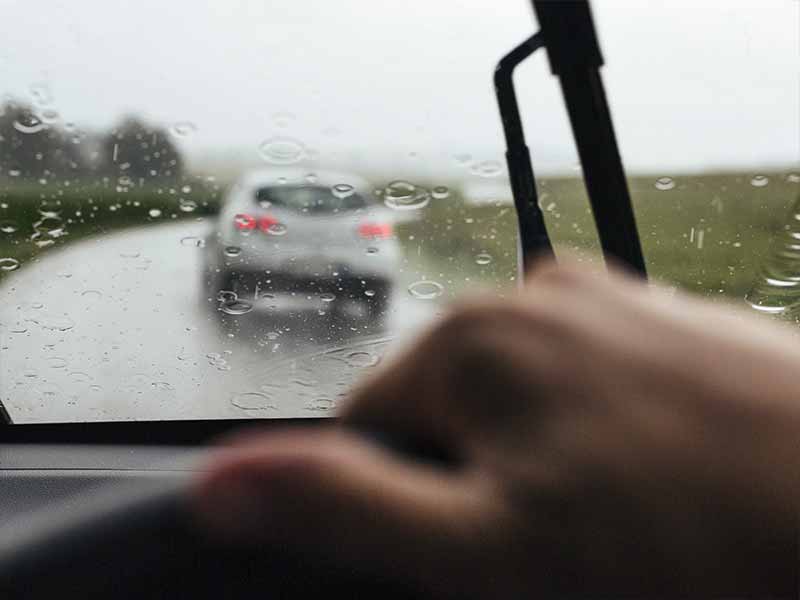There’s no doubt that hydroplaning is scary and if you drive often enough you’ll be in a situation where you could easily experience it.
Understanding the causes and when hydroplaning occurs can help you avoid the loss of control and better deal with it if it happens to you.
When Does Hydroplaning Occur?
Hydroplaning occurs when you exceed the ability of your tires to channel water out and away from underneath your tires.
The primary cause of hydroplaning is speed. Insufficient tread depth reduces the speed required to overwhelm your tires due to water on the road surface.
These are the fundamental factors, but understanding the specifics can help you better maintain a buffer between you and a hydroplaning situation.
Let’s take a closer look.
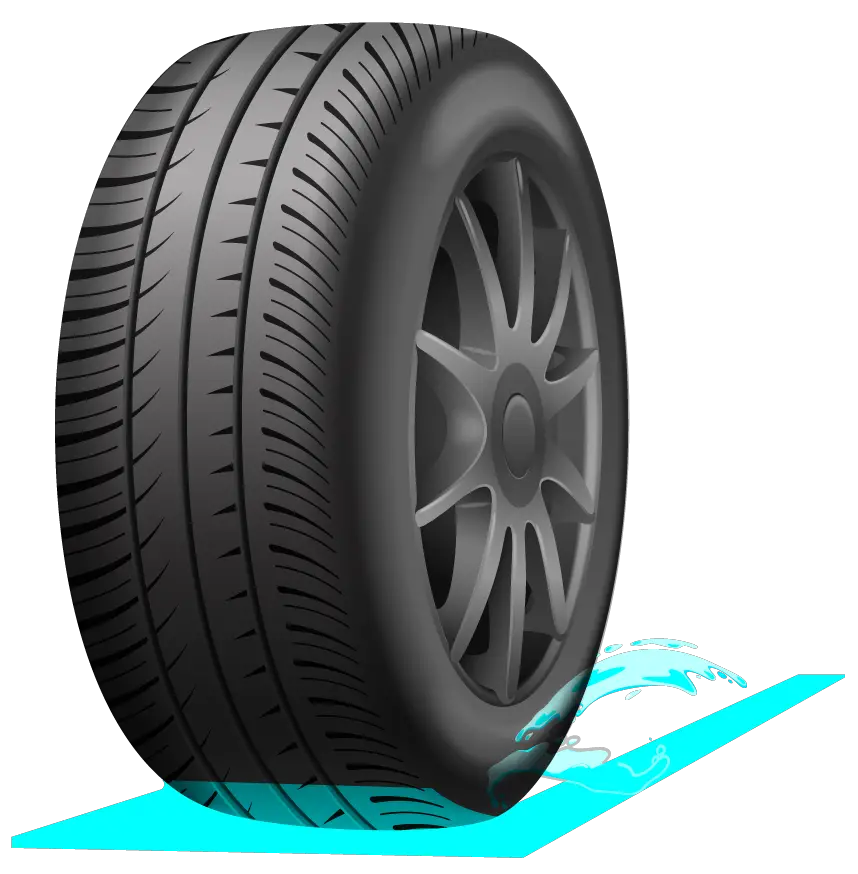
What Are The Causes Of Hydroplaning?
The 3 main causes of hydroplaning are:
Water On The Road
Hydroplaning can only occur with water on the road surface obviously. But the amount of water on the road is critical in determining whether or not the chance of hydroplaning is high.
A merely damp road surface may be slippery, especially after a light rain that hasn’t produced enough rain to rinse away the oil residue and other lubricating fluids dropped by cars and trucks over the previous days or weeks, but it won’t necessarily cause hydroplaning.
Hydroplaning only happens when there is enough water on the road to overwhelm your tire tread. The tread pattern of your tires is designed to channel water away from underneath your tires so they can maintain contact with the pavement.
If there is more water on the road than is capable of flowing through the grooves in the tread pattern of your tires, hydroplaning occurs.
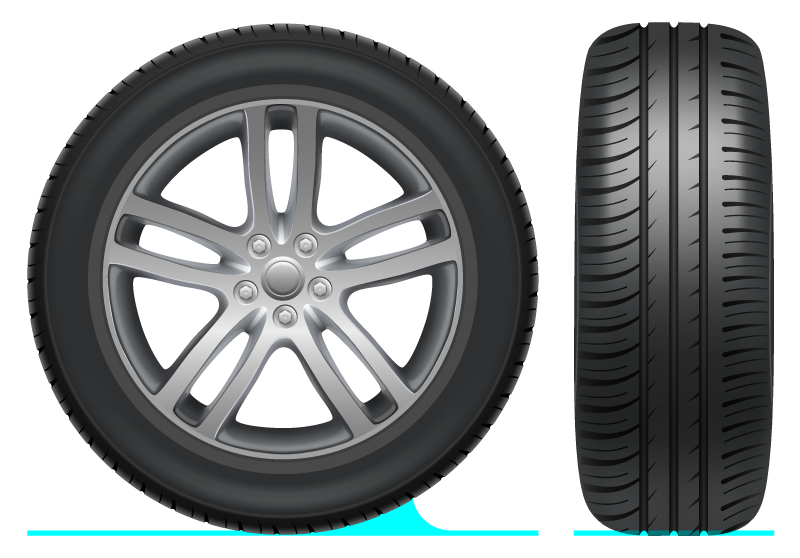
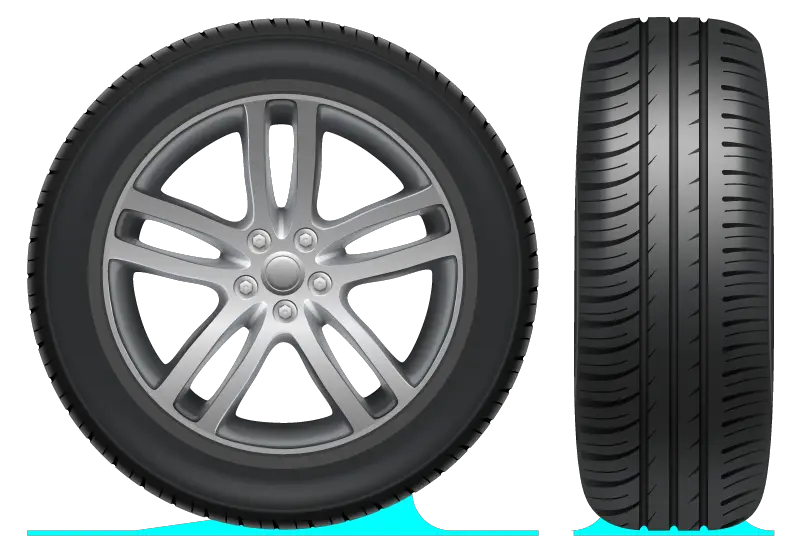
Speed
As speed increases, the amount of water that must flow through the tread grooves of your tread pattern increases. At higher speeds, the tires may be unable to funnel enough water away.
Hydroplaning is kind of like skipping a pebble across a pond. If you drop the pebble it will simply sink to the bottom. But if you throw it with enough speed along the surface it will skip. Your tires essentially do the same thing.
If your car or truck is simply rolling forward and a very slow speed like you would through a busy parking lot, you’re at no risk of hydroplaning. If you’re traveling at highway speeds, your risk is very high.
There is no single speed that you can drive that will guarantee you won’t hydroplane, but driving more slowly when you see standing water or during heavy rain is always smart.
Hydroplaning can occur at speeds below 35 miles per hour in some circumstances. It usually requires more speed, however. A good rule of thumb is to not exceed the posted speed limit in wet conditions. I know most of us push past this mark regularly, but you should adhere to it to help avoid hydroplaning. It won’t guarantee your safety, but it will significantly reduce the risk.
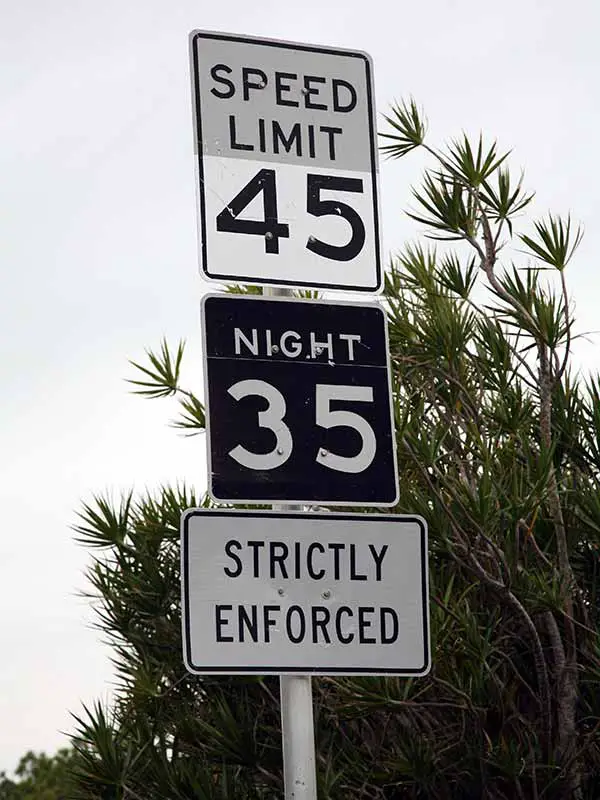
Tread Depth
Tread depth plays a significant role in how much water your tires can move from underneath themselves. Tires are most effective at channeling water when they are new because the tread grooves are at their deepest.
As your tires wear over time, the tread depth decreases and the space for water to flow through becomes smaller. Every bit of rubber that wears away from the surface of your tire’s tread reduces its performance on wet roads.
New tires typically have 10/32″ to 11/32″ tread depth. The legal minimum tread depth in most states, and the point at which your tires are considered bald, is 2/32″ of tread remaining.
Tires with only 2/32″ of remaining tread depth are at a significantly higher risk of hydroplaning than new tires. It would take very little water depth to overwhelm these shallow grooves and cause your tires to lose contact with the pavement.
Can You Prevent Hydroplaning?
Hydroplaning is preventable, but there will always be situations where you are at greater risk. Driving in the rain with very worn tires will put you at high risk and you should avoid doing so or drive slower than the surrounding traffic by a good margin.
Slow Down
Vehicle speed is the most significant factor that you have control over that can lead to a hydroplaning situation. Whenever you’re driving on wet roads you should slow down.
Don’t exceed the post speed limits and try to drive slower if possible. Once heavy rain subsides you should still keep an eye out for standing water and slow down if you can’t avoid it.
Replace Tires Early
The other factor you can control is how worn you allow your tires to become before replacing them with a new set of tires. Since the depth of the tread grooves have a significant effect on the speed at which hydroplaning occurs, most tire professionals recommend replacing your tires when they reach 4/32″ of depth.
Panic braking from 70 mph when roads are wet can take 50% more distance to come to a complete stop when comparing new tires to tires with those that have worn to only 4/32″ of tread remaining.
The difference between 4/32″ and 2/32″ is another 50%. This means it can take twice as long to come to a complete stop if you allow your tires to become completely worn to the minimum acceptable depth rather than replacing them slightly sooner.
At What Speed Does Hydroplaning Occur?
There is no one speed to stay below to ensure you’ll never experience hydroplaning. There are more factors to hydroplaning than just speed.
Hydroplaning can occur at speeds below 35 mph in certain circumstances. But it’s possible to travel at highway speeds and not have any signs of hydroplaning when driving in the rain.
I recommend that you not exceed the posted speed limit and try to remain below it if you’re driving in the rain or there is standing water.
Speed is the most significant factor you have control of to avoid hydroplaning. Driving more slowly when the risk of hydroplaning is high will help reduce your chances of experiencing a hydroplaning event.
How Much Rain Does It Take To Hydroplane?
There is no one certain amount of rain that will cause you to hydroplane and lose control. In fact, you can easily experience hydroplaning after a rainstorm occurs due to standing water or simply the fact that there is still quite a bit of water that hasn’t run off into drains or the grass on the side of the road yet.
It will also require less water on the road surface if your tires are worn or you are driving more quickly. All 3 of the primary factors have an effect and there isn’t any certain amount of rain or water that will cause you to lose traction and cause hydroplaning to happen.
Since you can’t control how much heavy rain you’re experiencing or how wet the roads are, this isn’t the question I suggest you focus on. Speed and tire tread condition are within your control and more effective at helping you avoid hydroplaning.
Can You Hydroplane With New Tires?
Yes, even new tires can hydroplane. It would take more water on the road surface or faster speeds, but new tires can still lose traction and hydroplane in wet conditions.
No matter how new your tires are, to avoid losing control due to hydroplaning you should slow down. Speed is the single most important factor you control to reduce your risk.
You should also check the tread depth of your tires regularly. If your tires have worn to 4/32″ or less you should consider replacing them, and if they haven’t, you should be more cautious the closer to 4/32″ of wear they become.
Can You Hydroplane On Ice?
It’s very possible to hydroplane on ice if the temperature is warm enough for the ice to begin thawing and melting. Even if the temperatures aren’t warm enough, driving in icy conditions is as dangerous or more so than in wet conditions.
Studded tires for use on icy roads will provide significantly improved traction, but if there is standing water on the surface of the ice, the water can still overwhelm the grooves in your tires and cause the water to lift your tires up enough from the surface for hydroplaning to happen.
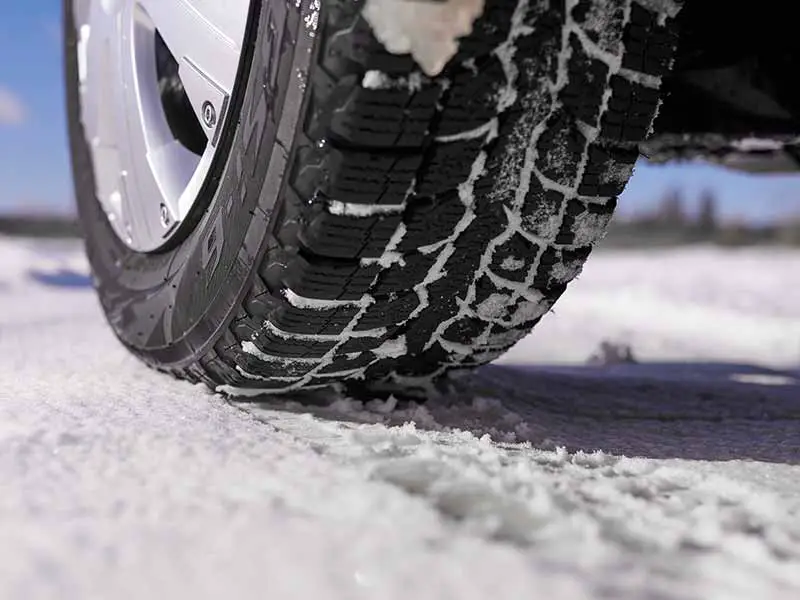
Is Hydroplaning Common?
Unfortunately, hydroplaning is all too common. If you’ve never experienced hydroplaning you should consider yourself lucky. It’s a very scary experience and all too common for many drivers.
According to the U. S. Department of Transportation Federal Highway Administration, 15% of vehicle crashes between 2007 and 2016 were related to wet pavement.
Fortunately, many hydroplaning experiences end with the driver being able to safely regain control. But many are unable to do so and end up veering off the side of the road or ramming into the cars ahead.
Always reduce your speed in rainy conditions, avoid using cruise control, and avoid hard braking or sudden steering wheel movements.
Resources
Below are some links you may find helpful when learning about tires
- Hydroplaning explained: 9 safety tips to keep your vehicle under control – Driving Tests
- Avoid hydroplaning through tire and driver education – Bridgestone
Final Thoughts
To avoid experiencing hydroplaning yourself you should always slow down. Speed is the primary cause of hydroplaning, even with new tires. Avoid cruise control, hard braking, and sudden steering wheel movements if you feel like you’re at risk.
If you think you’re experiencing hydroplaning happens, stay calm and lift your foot off the gas pedal. Gently turn into the slide if you begin to drift one way or the other.
Once you regain control, continue driving so that you can keep yourself and your vehicle out of the path of cars and trucks behind you that may also end up in a hydroplaning situation.
Good luck and happy motoring.
